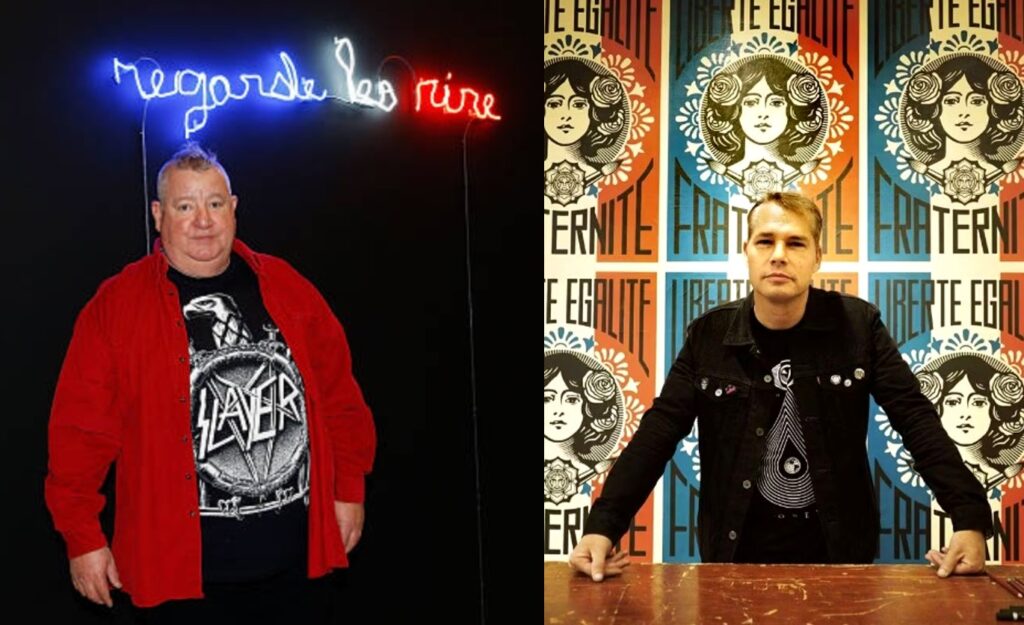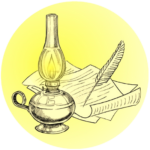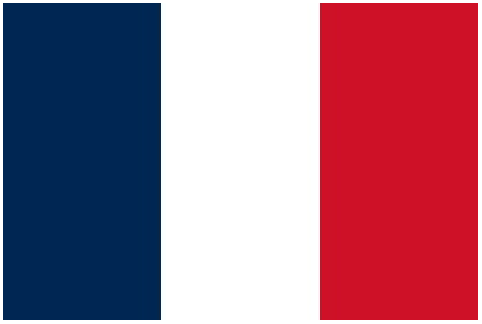On October 15, 2017, during an interview given by President Emmanuel Macron on television, the French public got a glimpse of the furnishings in the President’s office, located in the salon d’angle of the Élysée Palace. One particular piece caught the attention of some internet users: Shepard Fairey’s tricolored painting “Liberté, Equalité, Fraternité,” hanging behind the President, in which some saw an occult symbol. After thoroughly analyzing this painting (see our page “This is Not a Marianne“) and realizing that the presence of additional occult symbols in the office would add greater significance to our previous observations, we turned our attention to another element of the décor. Here, we present our analysis of the large black velvet rug that covers the office floor.
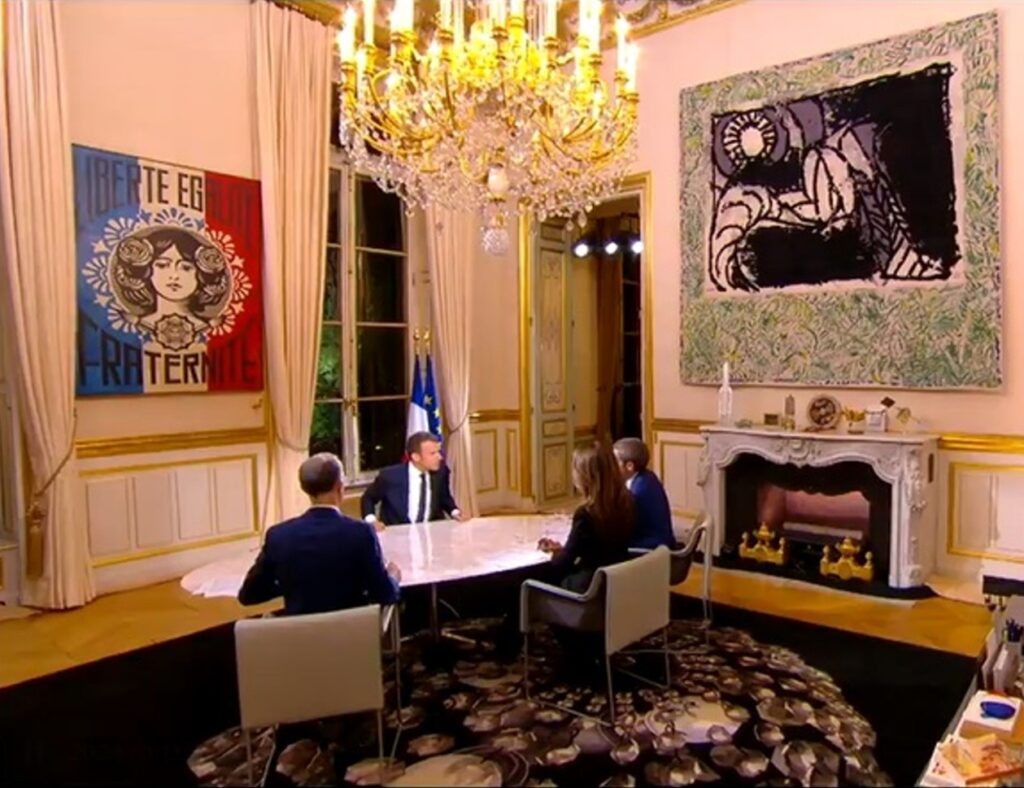
Similarities with an occult symbol
The Mobiler national, which administers state furniture in France, attributes the rug to French visual artist Claude Lévêque. Created in 2007 by the Manufacture de la Savonnerie, this piece depicts a spherical chandelier with crystal pendants, illuminated by three bulbs, on a black background. It is the name given to the work by its author that first caught our attention: “Soleil noir” (Black Sun). This term, though used in various fields and as the title for several artistic works (novels, films, songs, etc.), is also the name of an esoteric symbol; a particularly controversial one due to its association with Nazi mysticism. In doing some research, we discovered that this symbol appears on certain flags of the neo-Nazi movement, and we were surprised to find similarities between the design of those flags and Claude Lévêque’s rug: the following photograph shows the piece in its entirety, while the next two images present the Black Sun symbol as it appears on neo-Nazi flags (source: https://commons.wikimedia.org/wiki/File:Black_Sun_Flag.svg).
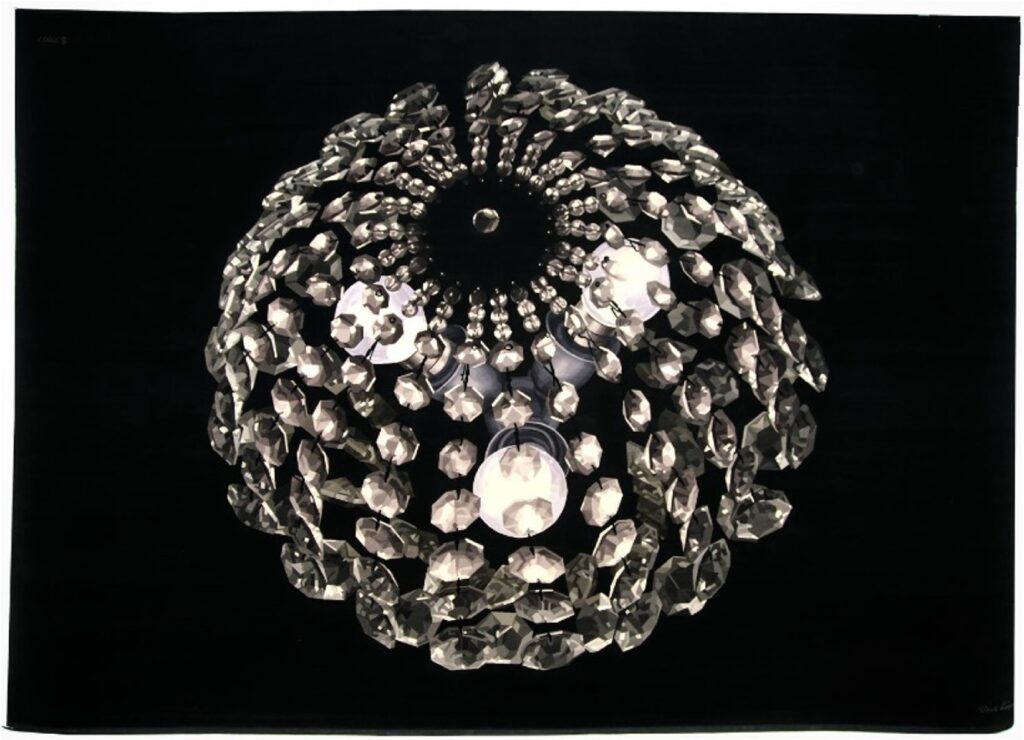
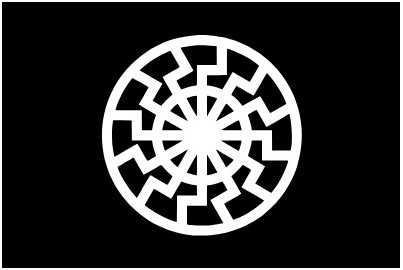
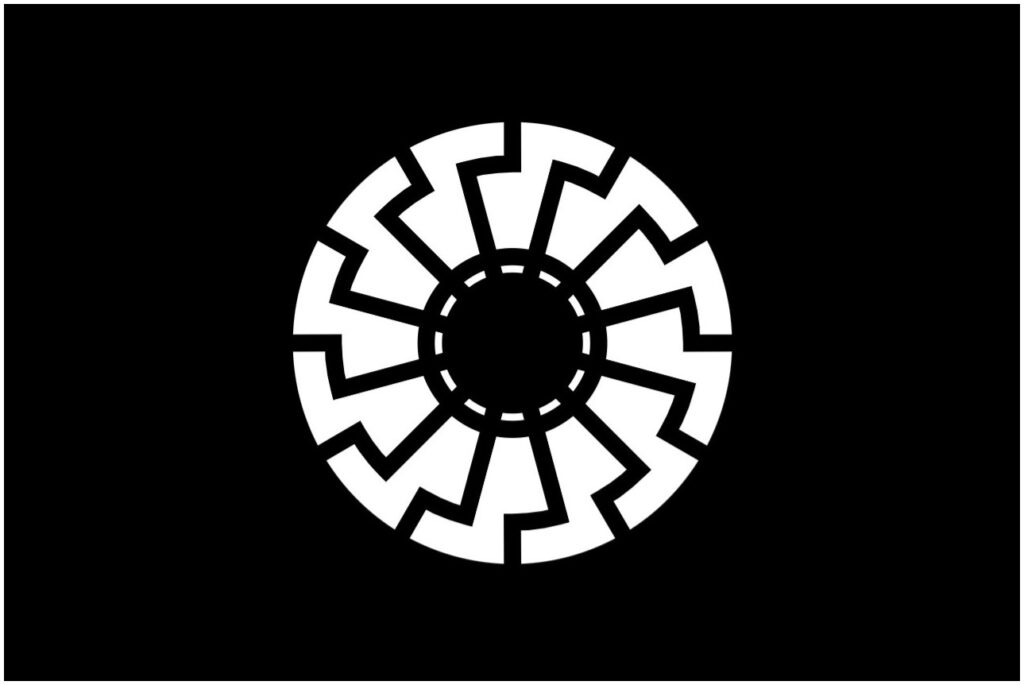
- Colors: a light pattern on a black background
- Shapes: a circular, radiating motif centered within a rectangle
- Proportions:
- The length-to-width ratio of the rug is similar to that of the flags
- The chandelier on the rug occupies roughly the same space as the circular motif on the flags
« Die Schwarze Sonne », the Nazi black sun
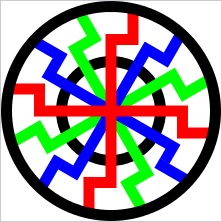
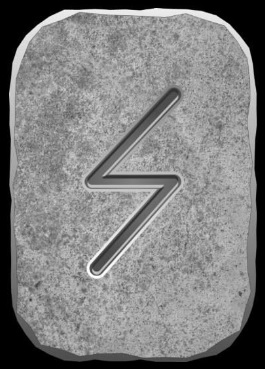
The black sun of Wewelsburg
The symbol created by Karl Wiligut first appeared at Wewelsburg Castle in Germany after the SS took control of it in 1934. Heinrich Himmler (one of the highest dignitaries of the Third Reich and absolute master of the SS) intended the site to become the spiritual centre of the Germanic empire, considering the axis of the north tower to be its absolute centre. Under his command, the castle was remodeled (by prisoners from a concentration camp established nearby specifically for this purpose) and a special room was constructed in this tower: the SS Generals’ Hall (in German “Obergruppenführersaal”), featuring twelve columns, twelve windows, a vaulted ceiling, and a marble floor decorated in its center with a dark green circular mosaic: the Black Sun. Directly beneath the hall, where there once was a cistern, the SS created a crypt modeled after a Mycenaean tomb. They lowered the floor by nearly five meters and installed a pipe suggesting that the centre of this crypt was intended to hold an eternal flame. Twelve pedestals topped with niches were installed around the perimeter of the crypt, and the keystone was adorned with a swastika (Source: Wikipedia). The images below show the Generals’ Hall, the crypt, and a general view of the castle with its north tower at the back.
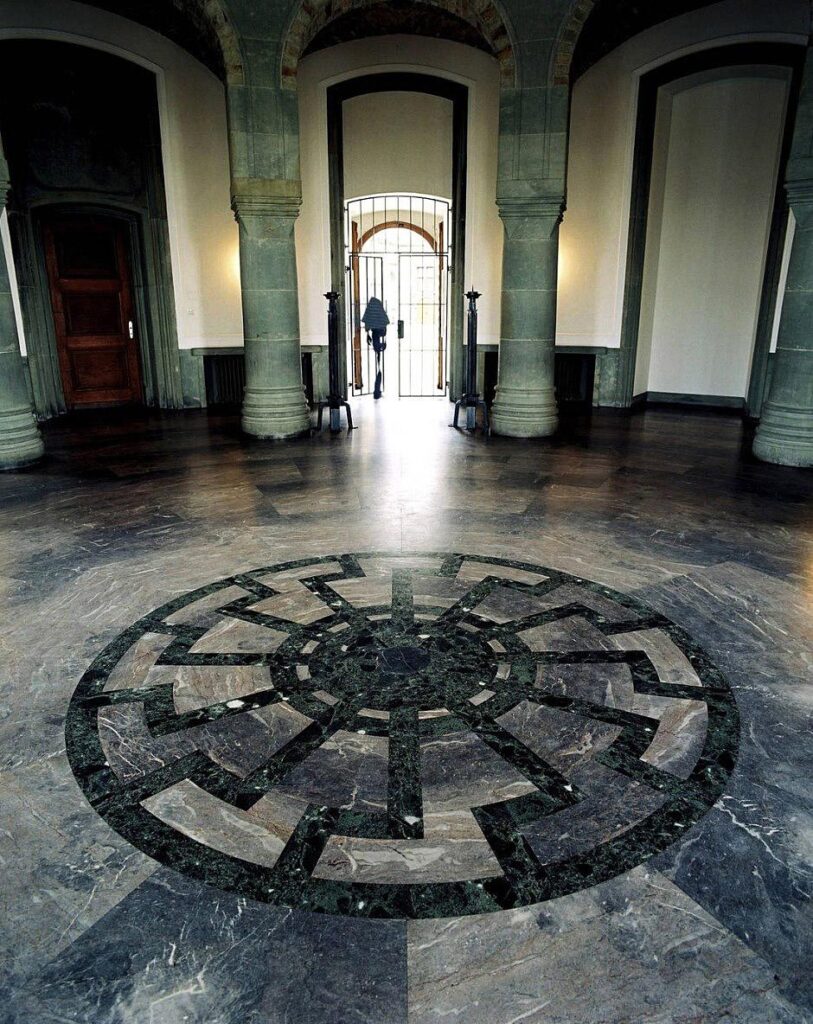
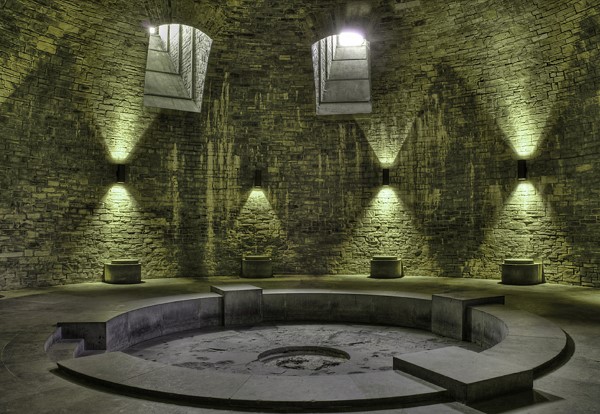
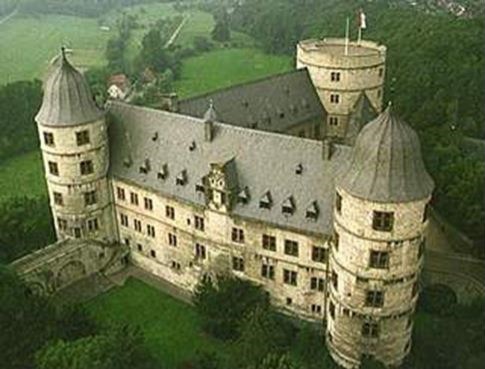
Armed with this information, we can add a few more elements to our list of similarities that could link the Black Sun to the rug in the corner room. The first is their placement on the floor: the Wewelsburg mosaic adorns the floor of the Obergruppenführersaal, and the rug decorates the floor of Emmanuel Macron’s office. Could Claude Lévêque have intentionally made his work a rug (therefore intended to be placed on the floor) to evoke the mosaic of the SS Generals’ Hall?
Another similarity lies in their dimensions: approximately three meters in diameter for the Black Sun at Wewelsburg, as well as for the chandelier on Claude Lévêque’s rug (within thirty centimeters). The two photos that follow show the similar sizes of these two artifacts. Did Claude Lévêque choose the size of his rug in a view to reinforce a reference to the mosaic at the castle?
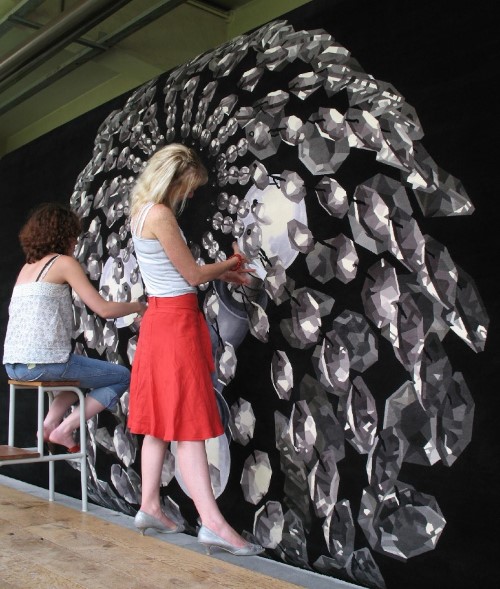
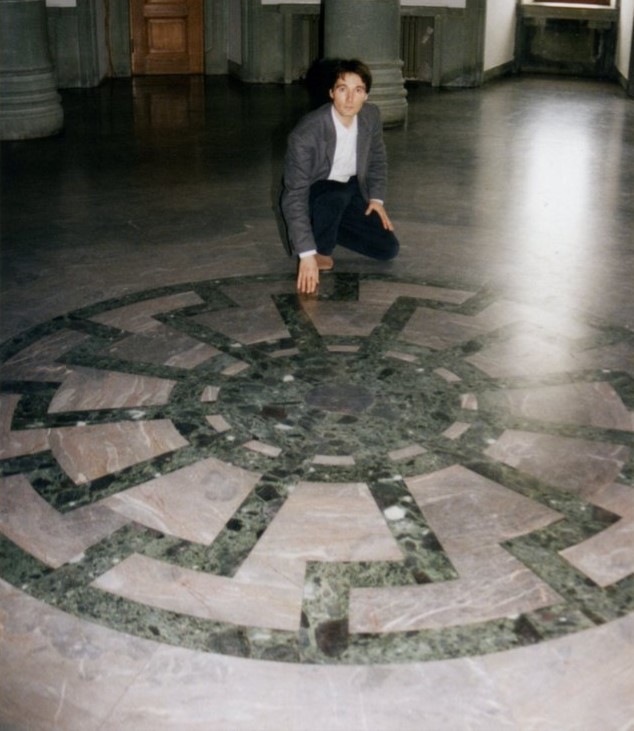
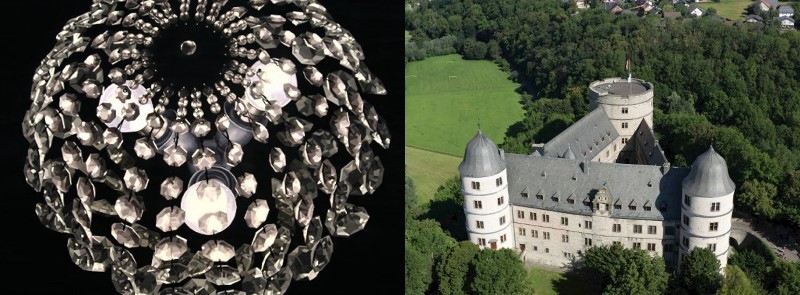
Thus, one might wonder if Claude Lévêque designed his rug not only to reference neo-Nazi flags and the Black Sun symbol but also to specifically depict the mosaic of Wewelsburg Castle.
Satanic rituals at Wewelsburg
Although the hall and crypt of the north tower appear to have been designed by Himmler for ceremonies, historians cannot confirm that they were ever used for this purpose by the SS, let alone specify how. However, several accounts agree that the tower has more recently been the site of very particular ceremonies: satanic rituals. In the following video (an excerpt from the documentary “Die Schwarze Sonne” by Rudiger Sunner), the museum director of the castle explains that groups constantly attempt to break into the crypt (and sometimes succeed) to hold black masses there. The next two videos are from a report by Liz Wieskerstrauch titled “Living Hell – The Fight of the Victims: Ritual Abuse in Germany” (Höllenleben – Der Kampf der Opfer: Ritueller Missbrauch in Deutschland). They feature harrowing testimonies from women who claim to have participated in rituals involving blood sacrifices in the north tower. First, “Nicki” recalls being forced as a child to participate in a ritual lying on the black sun mosaic of the generals’ hall and to commit infanticide. Then, “Karine” recalls the generals’ hall, the crypt, and a murder that took place there.
Nazisme and satanism
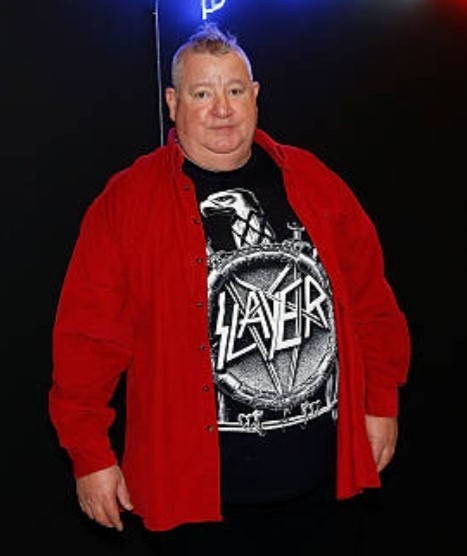
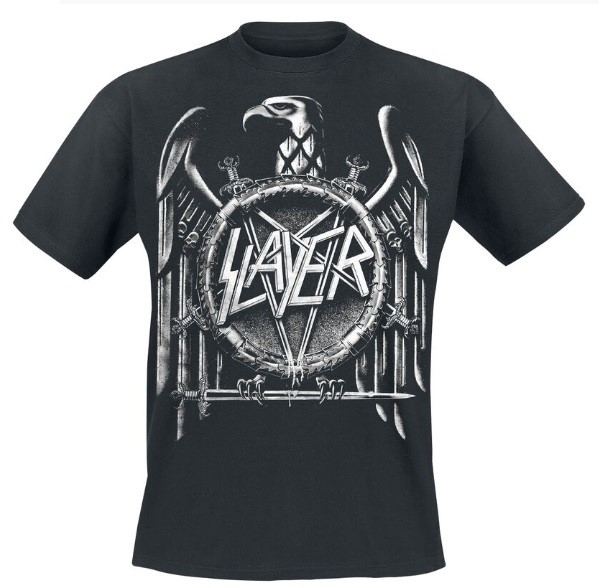
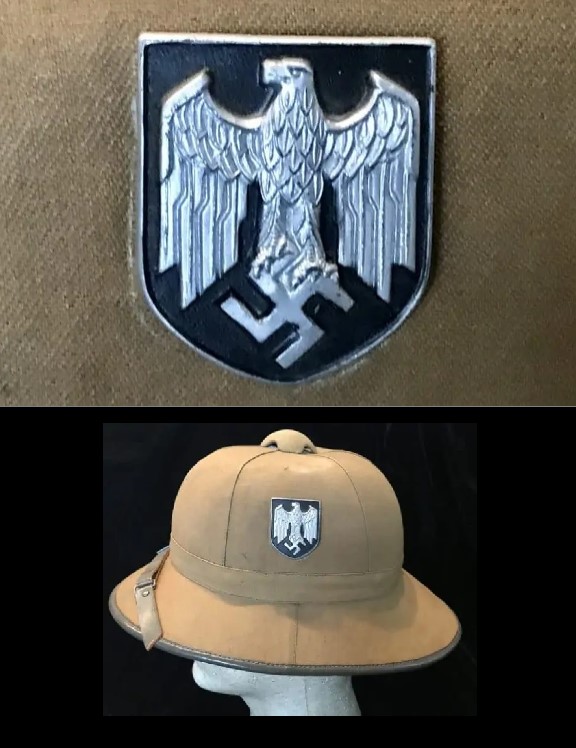
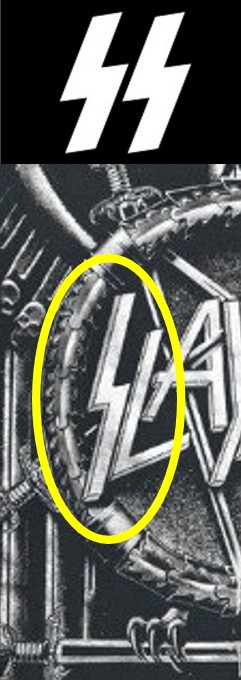
But in addition to the imperial eagle and the “sig” rune, the t-shirt features an inverted pentagram at its centre. Slayer has frequently used satanic imagery both on stage and on album covers and has referenced this theme in their songs (for example, in the track “Show No Mercy”).
We acknowledge that wearing a metal band t-shirt might simply reflect musical taste. However, wearing a garment whose design is inspired by both Nazi emblems and a satanic symbol seems noteworthy, especially when it involves the artist of a work titled Black Sun.
Summary list
Here are the connections we’ve noted between Claude Lévêque’s rug and the Nazi Black Sun:
- Homonymy: The rug and the Nazi symbol share the same name.
- Shapes: Both the rug and the neo-Nazi Black Sun flags feature a circular, radiating pattern within a rectangle.
- Colors: Both the rug and the Black Sun flags display a light motif on a black background.
- Proportions: The ratio of the length to width of the rug is similar to that of the flags; additionally, the chandelier on the rug occupies roughly the same space as the circular motifs on the flags.
- Size: The diameter of the chandelier on the rug and the mosaic at Wewelsburg are approximately the same.
- Placement: The rug is designed to be laid on the floor, similar to how the Wewelsburg mosaic decorates the floor of the Obergruppenführersaal.
- Three bulbs and three towers: We’ve drawn a parallel between the three light bulbs on the chandelier and the three towers of Wewelsburg Castle.
- Mixture of nazism and satanism: Besides its Nazi associations, Wewelsburg has also been a site for satanic rituals, and Claude Lévêque has been photographed wearing clothing adorned with both Nazi and satanic symbols.
Conclusion
Can we draw conclusions from our analysis of the rug? It is up to the reader to assess the relevance of our observations and evaluate the likelihood that Lévêque intended to allude to the Nazi Black Sun symbol, or even to the mosaic of Wewelsburg. However, let us consider for a moment that the rug does indeed reference this esoteric symbol, and contemplate the enormity of the implication: it would mean that Emmanuel Macron performs his presidential duties from an office adorned with a vast (3.83 × 5.48 m) symbol of Nazi mysticism!
Rather than providing answers, our research raises many questions. If the reference were confirmed, could we determine the message or intent of the artist? If there is a message, who is it addressed to? Moreover, beyond the intrinsic message of the artwork, could the mere fact that this rug was chosen to decorate the presidential office constitute a signal in itself? If so, what would this signal be and to whom would it be addressed? According to the Mobilier national, which manages state furniture, the office was entirely redecorated by Brigitte Macron. Therefore, it is possible that the First Lady is responsible for the choice of the rug and she might be able to provide some clarifications…
Whether or not one believes the artist intended to reference the Nazi symbol, it is important to note that we do not have enough information to assess either his intention or his character. In fact, we might soon learn more about his character, as at the time of writing, Claude Lévêque has been charged with the rape of minors. A preliminary investigation had already been opened in 2019 following Laurent Faulon’s accusations of child rape against Lévêque. However, in 2023, following complaints from two new victims, the artist has been charged with “rape of a minor under 15,” “rape of a minor by a person in a position of authority,” and “sexual assault of a minor under 15 by a person in a position of authority.”
These accusations against the creator of the rug draw a curious parallel with the scandal surrounding Emmanuel Macron’s relationship with his teacher and future wife, Brigitte Trogneux, when he was a minor himself.
Recurring themes
If we acknowledge the occult connotations of the Shepard Fairey painting hanging in the same room (see our page “This is not a Marianne“), an intriguing coincidence emerges: not one but two of the artworks in the President’s office would be linked to the occult. Not only would Emmanuel Macron be situated in the midst of a “Schwarze Sonne” (a symbol associated with satanic rituals at Wewelsburg), but also, a thinly veiled (simply rotated 180 degrees) sigil of Baphomet would dominate the scene from the back wall.
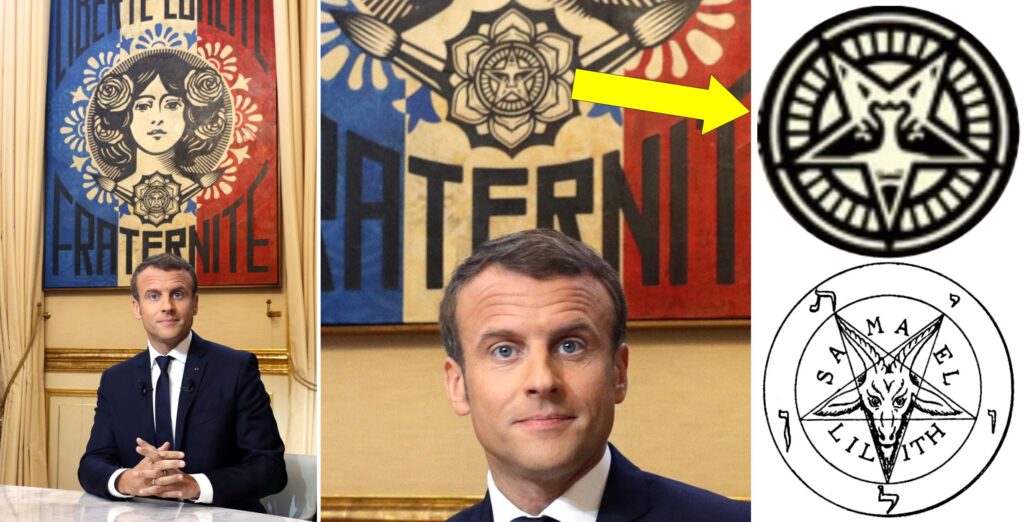
The following photo, published in Le Monde, appears to have been carefully composed to show both the Lévêque rug, with the President standing in its centre, and the Fairey painting, with the pentagram highlighted by the light spot projected by the photographer onto the painting

Let’s point out another rather curious coincidence: just like Claude Lévêque, Shepard Fairey also wore a t-shirt decorated with an inverted pentagram. Thus, we can state that two artists whose works are displayed in Emmanuel Macron’s office have worn clothing adorned with this symbol. Are these merely incidental acts, or is there something more to it? Did the artists intend to signal something? If so, what and to whom?
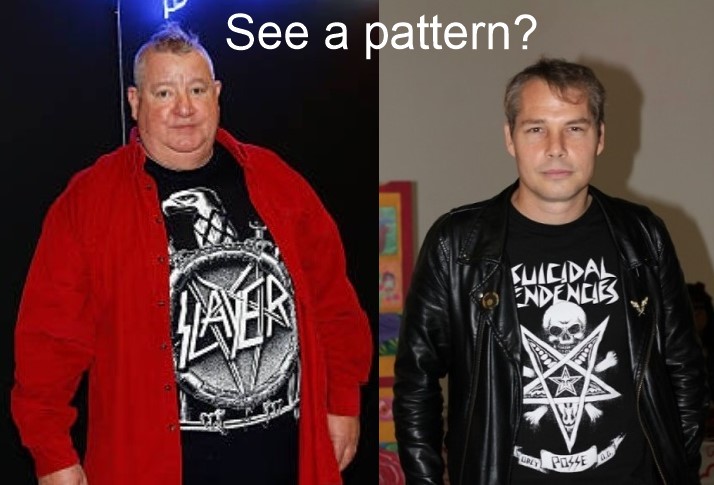
Finally, for the sake of completeness, let’s mention the last coincidence: both Claude Lévêque and Shepard Fairey produced questionable works in blue, white, and red in response to the terrorist attacks in Paris in 2015. Indeed, a few weeks after the January 2015 attacks, Lévêque unveiled a rather unsettling tricolor neon piece titled “Regarde les rire” (Look at them laugh). Meanwhile, Fairey created his “Liberté, Égalité, Fraternité” artwork in the colors of the French flag following the November 13, 2015, terrorist attacks.
